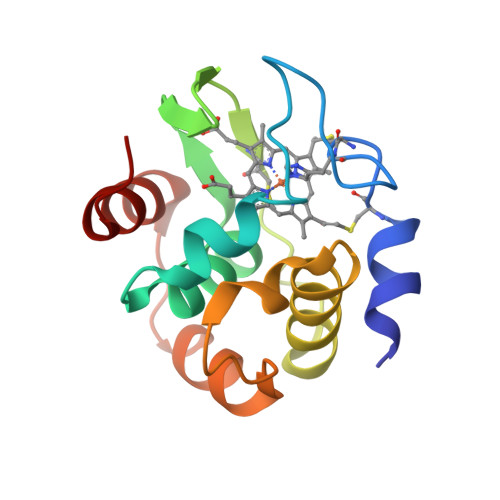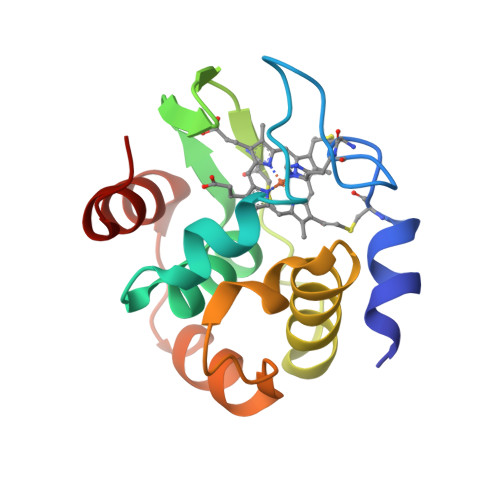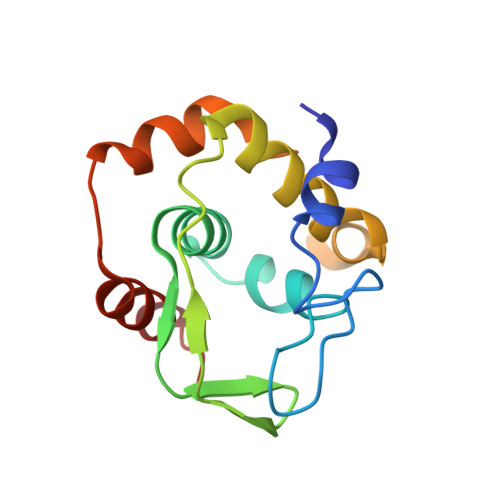Cytochrome rC552, formed during expression of the truncated, Thermus thermophilus cytochrome c552 gene in the cytoplasm of Escherichia coli, reacts spontaneously to form protein-bound 2-formyl-4-vinyl (Spirographis) heme.
Fee, J.A., Todaro, T.R., Luna, E., Sanders, D., Hunsicker-Wang, L.M., Patel, K.M., Bren, K.L., Gomez-Moran, E., Hill, M.G., Ai, J., Loehr, T.M., Oertling, W.A., Williams, P.A., Stout, C.D., McRee, D., Pastuszyn, A.(2004) Biochemistry 43: 12162-12176
- PubMed: 15379555
- DOI: https://doi.org/10.1021/bi048968l
- Primary Citation of Related Structures:
1QYZ, 1R0Q - PubMed Abstract:
Expression of the truncated (lacking an N-terminal signal sequence) structural gene of Thermus thermophilus cytochrome c(552) in the cytoplasm of Escherichia coli yields both dimeric (rC(557)) and monomeric (rC(552)) cytochrome c-like proteins [Keightley, J. A., et al. (1998) J. Biol. Chem. 273, 12006-12016], which form spontaneously without the involvement of cytochrome c maturation factors. Cytochrome rC(557) is comprised of a dimer and has been structurally characterized [McRee, D., et al. (2001) J. Biol. Chem. 276, 6537-6544]. Unexpectedly, the monomeric rC(552) transforms spontaneously to a cytochrome-like chromophore having, in its reduced state, the Q(oo) transition (alpha-band) at 572 nm (therefore called p572). The X-ray crystallographic structure of rC(552), at 1.41 A resolution, shows that the 2-vinyl group of heme ring I is converted to a [heme-CO-CH(2)-S-CH(2)-C(alpha)] conjugate with cysteine 11. Electron density maps obtained from isomorphous crystals of p572 at 1.61 A resolution reveal that the 2-vinyl group has been oxidized to a formyl group. This explains the lower energy of the Q(oo)() transition, the presence of a new, high-frequency band in the resonance Raman spectra at 1666 cm(-1) for oxidized and at 1646 cm(-1) for reduced samples, and the greatly altered, paramagnetically shifted (1)H NMR spectrum observed for this species. The overall process defines a novel mechanism for oxidation of the 2-vinyl group to a 2-formyl group and adds to the surprising array of chemical reactions that occur in the interaction of heme with the CXXCH sequence motif in apocytochromes c.
Organizational Affiliation:
Department of Biology, University of California at San Diego, La Jolla, California 92093, USA. jafee@scripps.edu

















